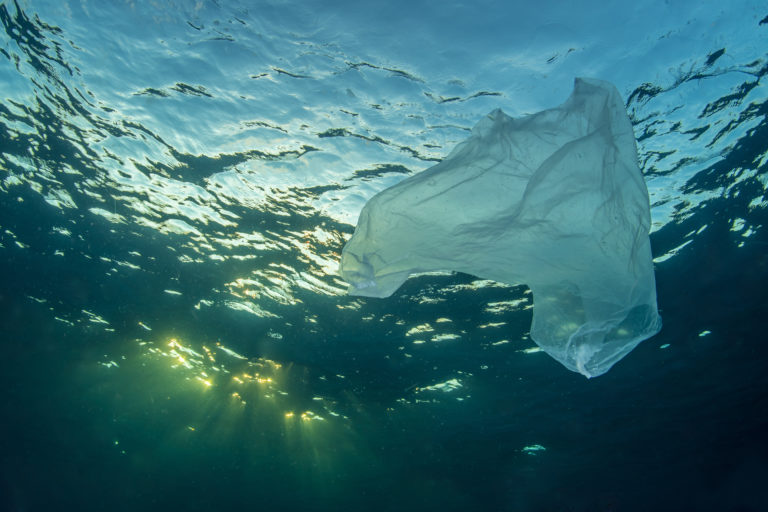
By Alexa Ruscitto, Waterkeeper Alliance intern
Most people know that plastics can take thousands of years to break down in the environment. But did you know, plastic also accumulates in the bodies of humans and in the food we eat?
When plastics do degrade through physical forces of nature, such as by wave action in the ocean or through photo-degradation, they do not disappear. Rather, they are merely broken down into smaller pieces known as microplastics. Microplastics are hard to see and their size and abundance make them extremely difficult to treat or control. Unfortunately, microplastics persist for decades, and you are consuming them every day in the food you eat and the water you drink.
Microplastics are tiny pieces of plastics that are generally less than five millimeters long. They are from a variety of sources, including everything from broken-down larger pieces of plastic to microbeads in beauty products, to tiny threads that shed from your fleece jacket when you wash it.
The use by a large percentage of the almost 8 billion people on earth of plastic water bottles, bags, and straws has inevitably created a plasticized food chain where microplastics bioaccumulate from the smallest marine organisms to humans. Moreover, many plastic products contain toxic additives to increase their durability, such as non-polyphenol, which can be harmful to humans when ingested.
So how does this bioaccumulation start? As mentioned, once microplastics enter the environment, such as the ocean, they assimilate into the marine food web. Small marine organisms found at the bottom of the food chain, such as bryozoans, corals, lugworms, crustaceans, zooplankton, and amphipods ingest microplastic directly or via trophic transfer.
Eventually, the consumption of many of these smaller marine organisms by larger animals works its way up the food chain. Sharks, rays, turtles, dolphins, and whales are some examples of marine organisms that prey on the small marine animals and ingest any plastic their prey contains.
Some examples: An albatross was found dead on a Hawaiian island with its stomach full of 119 water bottle caps. And a sperm whale found dead on a beach had ingested a plastic water gallon bottle, smaller plastic water bottles, and plastic water bottle caps.
It doesn’t stop there, some marine fish of concern that are found in human diets are tuna and swordfish. Plastic debris and fibers have been found in their guts before being sold to consumers.
Oysters and clams can also absorb microplastics present in seawater where they live naturally or are cultivated. While some of these microplastics are excreted, a percentage of them are trapped in the flesh of the animals. Once these animals are harvested, they reach the market and end up being sold to consumers for people to eat, microplastics and all. Would you like a side of microplastics with your oysters on the half-shell, ma’am?
In addition to unwittingly ingesting microplastics in the food we eat, we consume plastics and the chemicals they leach over time in our drinking water. Approximately 93 percent of plastic water bottles have been found been found to be contaminated with microplastics, which we consume when we drink bottled water.
We often think about the global problem of plastic pollution in our oceans, but few people understand this distinct global pandemic of human ingestion of microplastic.
According to a recent study, Nestle Pure Life was found to be the most highly-contaminated water bottle brand of those tested. Each liter of Nestle’s water tested contained as many as 10,390 microplastics particles, including polypropylene, nylon, and polyethylene terephthalate.
The extent to which human health is being adversely impacted by so much plastic ingestion is still unknown, but make no mistake about it: we consume microplastics every day in our diets, and more must be done to dramatically reduce plastics in our environment and our food chain.